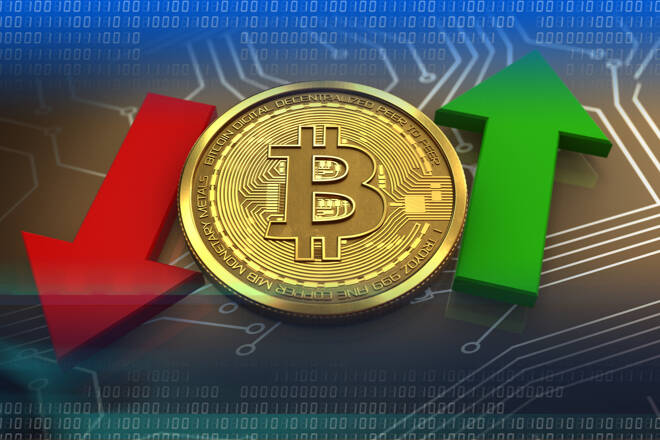Advertisement
Advertisement
BTC Fear & Greed Index Slips on a Bearish Monday Session
By:
In response to a bearish start to the week, the Fear & Greed Index fell deeper into the Extreme Fear zone. BTC is on the move this morning, however.
Key Insights:
- It was a bearish start to the week, with Bitcoin (BTC) ending the day at sub-$20,000 for the third time in four sessions.
- Risk aversion across the European equity markets weighed on investor sentiment, leaving dip buyers on the sidelines.
- The Bitcoin Fear & Greed Index slipped back from 23/100 to 22/100, the signal remaining bearish.
On Monday, bitcoin (BTC) fell by 1.07%. Reversing a 0.85% gain from Sunday, BTC ended the day at $19,789. While revisiting $20,000, BTC ended the day at sub-$20,000 for the third time in four sessions.
A mixed morning saw BTC rise to an early high of $20,060 before hitting reverse. Coming up short of the First Major Resistance Level (R1) at $20,165, BTC slid to a late morning low of $19,636. BTC fell through the First Major Support Level (S1) at $19,715. Finding early afternoon support, BTC tested resistance at $20,000 with an afternoon high of $19,965 before easing back.
There were no crypto events to provide direction, leaving BTC in the hands of the NASDAQ 100 Mini and the European equity markets.
Bearish sentiment, stemming from weak economic data from the Eurozone, weighed on the riskier assets. With the US markets closed, there was little movement in the NASDAQ 100 Mini to change the mood.
On Monday, the DAX slid by 2.22%. However, the NASDAQ 100 Mini is up 115.5 points this morning, supporting BTC and the broader crypto market.
Later today, US economic indicators will influence the NASDAQ 100 and the crypto market. The all-important ISM Non-Manufacturing PMI is the key stat of the day. Better-than-expected service sector activity could drive Fed fear and test appetite for riskier assets.
Bitcoin Fear & Greed Index Slips on Bearish Bitcoin Session
Today, the Fear & Greed Index slipped from 23/100 to 22/100. A bearish BTC session left the Index in the Extreme Fear zone for a seventh consecutive session. While falling deeper into the red, the Index avoided sub-20/100, limiting the impact on BTC.
However, the Index remains within the Extreme Fear zone, which leaves BTC’s current year low of $17,605 in play.
For the bulls, the Index needs a move through 40/100 to support a BTC return to $25,000.
Bitcoin (BTC) Price Action
At the time of writing, BTC was up 1.72% to $20,130. A bullish start to the day saw BTC rally from a low of $19,784 to a high of $20,183.
BTC broke through the First Major Resistance Level (R1) at $20,021.
Technical Indicators
BTC needs to avoid R1 and the $19,828 pivot to target the Second Major Resistance Level (R2) at $20,252 and resistance at $20.500. A bullish morning session would support a breakout from the morning high of $20,183.
An extended crypto rally would see BTC test the Third Major Resistance Level (R3) at $20,676. However, barring a risk-on relief rally in response to US economic indicators and any dovish FOMC member chatter, BTC will likely come up short of $21,000.
A fall through R1 and the pivot would bring the First Major Support Level (S1) at $19,560 into play. Barring an extended sell-off, BTC should steer clear of sub-$19,000. The Second Major Support Level (S2) at $19,404 should limit the downside.
The Third Major Support Level (S3) sits at $18,980
Looking at the EMAs and the 4-hourly candlestick chart (below), it was a bearish signal. This morning, bitcoin sat above the 50-day EMA, currently at $20,086.
The 100-day EMA pulled back from the 200-day EMA, with the 50-day EMA falling back from the 200-day EMA, delivering bearish price signals.
A fall through the 50-day EMA would bring the Major Support levels into play.
For the bulls, a BTC move through R2 ($20,252) and $20,500 would give the bulls a run at the 100-day EMA ($20,631) and R3 ($20,676). The 200-day EMA sits at $21,369.
Trend Analysis
Looking at the trends, BTC would need a move through the August high of $25,203 and $25,500 to target the June high of $31,956. Avoiding the August low of $19,540 would support a move back towards the 50-day EMA to ease selling pressure.
For the bears, a fall through the August low would bring the July low of $18,768 and the June 18 low of $17,601 into play.
About the Author
Bob Masonauthor
With over 28 years of experience in the financial industry, Bob has worked with various global rating agencies and multinational banks. Currently he is covering currencies, commodities, alternative asset classes and global equities, focusing mostly on European and Asian markets.
Did you find this article useful?
Latest news and analysis
Advertisement
